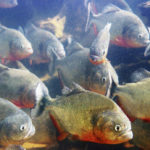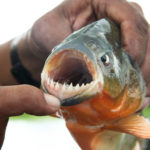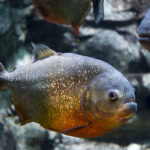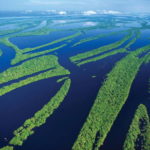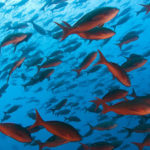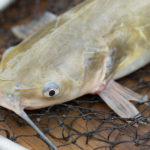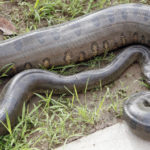Piranhas – information
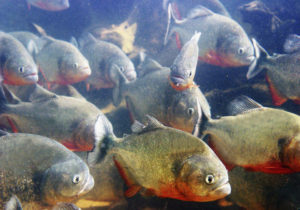 The name of the piranhas was given by the Indians, having combined it from two words “feather” – the fish and “rani” – saw. However, according to another version, it is translated as a “toothy demon”. But in any case, the fish fully justified both of their nicknames.
The name of the piranhas was given by the Indians, having combined it from two words “feather” – the fish and “rani” – saw. However, according to another version, it is translated as a “toothy demon”. But in any case, the fish fully justified both of their nicknames.
To date, piranhas number about 50 species. All of them live in the South American freshwater reservoirs. In particular, in the Amazon River, which, through the efforts of filmmakers, has become the most dangerous place on earth, teeming with toothy crocodiles, insatiable piranhas and huge anacondas. And there is some truth in this.
The body of the piranha is noticeably flattened on the sides and covered with fine shiny scales of silvery or dark gray with sparkles. Some species have exceptionally black color, with an orange, yellow or red belly standing out against its background. The size of fish varies between 20-50 cm. And the weight of the largest representatives of the species, usually, does not exceed 1 kg.
The lower jaw of the piranha is slightly pushed forward, and the razor-sharp lamellar teeth are arranged in such a way that, when the jaws are compressed, there is absolutely no lumen between them. It is worth mentioning about the power of the bite, the adult fish is able to eat a stick thick with the finger of an adult.
To outrun the herd through the Amazon, the local shepherds are sometimes forced to give up a flock of fish to one of their animals. And while predators in the party are busy with lunch, other animals safely cross dangerous waters. But this is more like an exception to the rule, as local residents have long learned to co-exist with piranhas and noticed that they are not always so evil.
Aggressiveness of piranhas depends on many factors: temperature, season, tides. If, for example, the carcass of an animal is lowered into the water during the tide, it will freely let go to the bottom, where it remains to lie. But if you throw a cow in the river at low tide, the piranhas will last for several minutes to leave only bones from it.
Finding yourself in the same water with piranhas, it is also not worth provoking them to attack. Literally, a drop of blood can attract fish, which previously were hundreds of meters away.
Piranhas are irreplaceable hospital orderlies and are of great importance for the ecosystem. Like wolves in the forest, they purify the reservoir of dead, sick and weak animals. Every time during the flood, various epidemics would noticeably reduce the local population of the Amazon, if not for the small fish that cleans the water of decaying flesh.
The fact that piranhas attack anything that moves, regardless of size, can not be called true. These fish are full of natural enemies: caimans, river dolphins, large water turtles, larger predatory fish and of course, humans.


